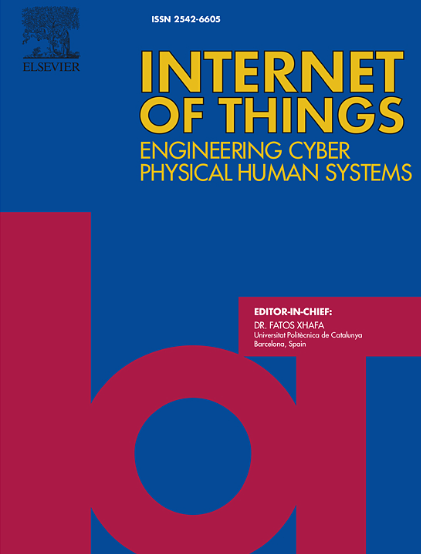A multi-layer echo state network for efficient DDoS detection in resource-constrained environments
IF 6
3区 计算机科学
Q1 COMPUTER SCIENCE, INFORMATION SYSTEMS
引用次数: 0
Abstract
This study proposes a multi-layer Echo State Network (ESN) model for effectively detecting DDoS attacks on resource-constrained and low-memory devices. Generally, these low-memory devices, common in smart homes, healthcare, and industrial applications, do not have enough computational resources to run traditional deep learning methods of DDoS attack detection. This makes the devices much more vulnerable to attacks. While previous works have focused mainly on improving detection accuracy, they have failed to consider vital trade-offs between resource utilization and detection performance. The proposed ESN model achieves 99.33% and 99.99% accuracy in CICDDoS2019 and CICIoT2023 datasets respectively. With only 640 trainable parameters, it ensures high performance with minimum consumption of computational resources. The proposed model has 1.27% and 0.06% CPU utilization in CICDDoS2019 and CICIoT2023. The CPU utilization is much lesser compared to LSTM, RNN, CNN, and state-of-the-art models, respectively. This makes our model a lightweight architecture suitable for devices with limited memory and processing power. The paper presents an efficient, lightweight model for the security of low-resource environments and robust DDoS detection without loss of accuracy.
一种用于资源受限环境下高效DDoS检测的多层回波状态网络
本文提出了一种多层回声状态网络(ESN)模型,用于有效检测资源受限和低内存设备上的DDoS攻击。通常,这些低内存设备在智能家居、医疗保健和工业应用中很常见,没有足够的计算资源来运行传统的DDoS攻击检测深度学习方法。这使得这些设备更容易受到攻击。虽然以前的工作主要集中在提高检测精度上,但他们没有考虑到资源利用率和检测性能之间的重要权衡。本文提出的ESN模型在CICDDoS2019和CICIoT2023数据集上的准确率分别达到99.33%和99.99%。它只有640个可训练的参数,以最少的计算资源消耗确保高性能。所提出的模型在CICDDoS2019和CICIoT2023中的CPU利用率分别为1.27%和0.06%。与LSTM、RNN、CNN和最先进的模型相比,CPU利用率要低得多。这使得我们的模型成为轻量级架构,适用于内存和处理能力有限的设备。本文提出了一种高效、轻量级的模型,用于低资源环境的安全性和不损失准确性的鲁棒DDoS检测。
本文章由计算机程序翻译,如有差异,请以英文原文为准。
求助全文
约1分钟内获得全文
求助全文
来源期刊

Internet of Things
Multiple-
CiteScore
3.60
自引率
5.10%
发文量
115
审稿时长
37 days
期刊介绍:
Internet of Things; Engineering Cyber Physical Human Systems is a comprehensive journal encouraging cross collaboration between researchers, engineers and practitioners in the field of IoT & Cyber Physical Human Systems. The journal offers a unique platform to exchange scientific information on the entire breadth of technology, science, and societal applications of the IoT.
The journal will place a high priority on timely publication, and provide a home for high quality.
Furthermore, IOT is interested in publishing topical Special Issues on any aspect of IOT.
 求助内容:
求助内容: 应助结果提醒方式:
应助结果提醒方式:


